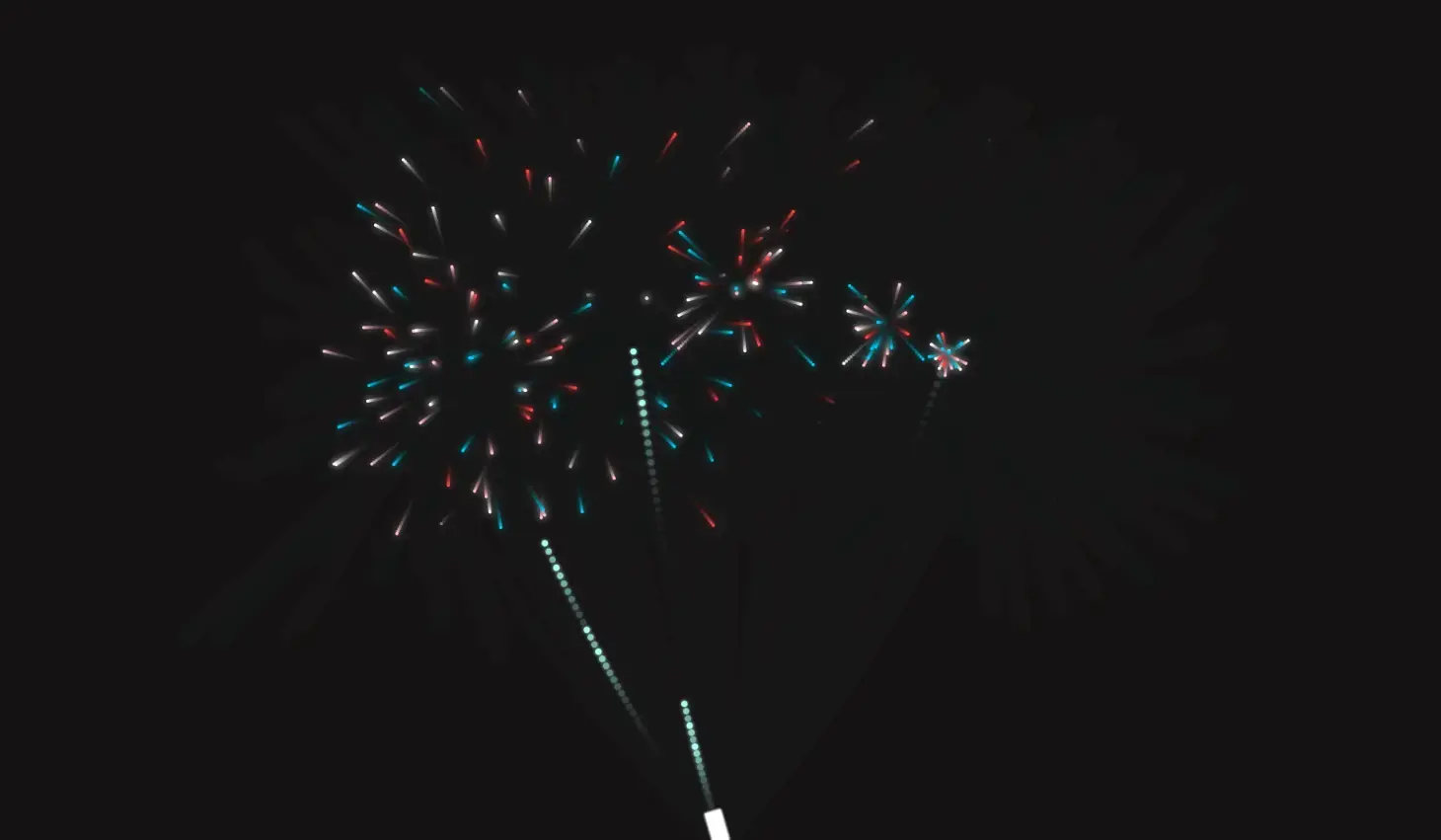
Overview: The Fireworks Launcher is an interactive web project that demonstrates how to create beautiful, performant particle-based fireworks using the HTML5 <canvas> element, CSS for UI and layout, and vanilla JavaScript for animation logic, physics simulation and event handling. This project is designed both as a visual demo and as an approachable tutorial for front-end developers who want to learn about animation loops, particle systems, object pooling, and performance techniques for the browser.
The project uses a modular structure: a canvas controller handles resizing, coordinate transforms and input; a physics module updates particle positions with basic gravity and drag; a renderer draws particles and trails efficiently. Particles are simple objects with properties like position, velocity, color, life and size. When fireworks explode they spawn many particles with varying velocity vectors; each particle is updated and rendered until its life expires. The code avoids frequent allocation by reusing particle objects from a pool — that drastically reduces garbage collection spikes.
requestAnimationFrame and computes delta time to keep animation frame-rate independent. Frame budget management is included to skip frames if rendering is too slow.ctx.globalCompositeOperation = 'lighter').For smooth animation at 60fps, the project includes:
Not everyone benefits from motion. The project detects the prefers-reduced-motion media query and exposes a toggle to disable heavy animations. All controls are keyboard accessible with appropriate focus outlines and aria-labels. The UI falls back gracefully if canvas is unavailable: a static SVG or an animated GIF preview can be shown instead.
1. Open the page, allow the demo to initialize (canvas sizing).
2. Click/tap anywhere on the canvas to launch a new firework.
3. Use sliders to adjust particle count, life span, gravity and explosion intensity.
4. Toggle color palettes and trails to explore different visual styles.
5. If performance drops, switch to reduced particles mode or enable low quality rendering.
- Add sound effects on explosion with Web Audio API and spatial panning.
- Implement preset shows that launch fireworks in timed sequences (for simulations of events).
- Allow users to save/load palettes and share them via URL encoding.
- Add physics-based collisions with simple ground bounce and spark interactions.
- Integrate WebGL for huge particle counts with GPU acceleration (using regl or three.js).
Building this project teaches: canvas drawing fundamentals, animation timing, vector math, performance profiling and optimization, event handling for multiple input types, UI/UX considerations for animations, and techniques to improve perceived performance on lower-end devices.
| Last Update | 14 Sep, 2025 |
| Created | 14 Sep, 2025 |
| Technology Used | HTML CSS JavaScript |
| Compatible With | Any Browser |
| Documentation | No |
| Layout | Responsive |
| Total Download | 0 |
| Total Views | 3 |
| Tags |